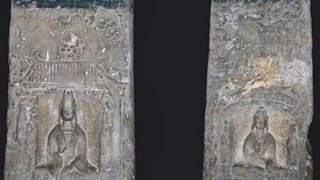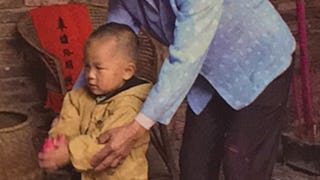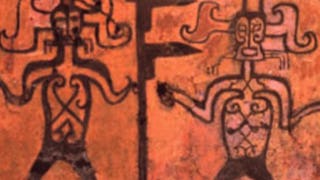This sequence of four courses will propose a multi-disciplinary approach to the study of Chinese cultural history conceived of as a succession of modes of rationality (philosophical, bureaucratic, and economic). The focus will be on the moments of paradigm shift from one mode of rationality to another. For each of these moments, cultural facts and artifacts—thought, literature, ritual—will be examined in relationship to changing social, political, and economic systems.



Religion and Thought in Modern China: the Song, Jin, and Yuan

Instructor: Prof. John Lagerwey
6,696 already enrolled
Included with
(48 reviews)
Skills you'll gain
Details to know

Add to your LinkedIn profile
43 assignments
See how employees at top companies are mastering in-demand skills

There are 8 modules in this course
This module presents what is unique to the Song dynasty: why it can be called “modern”; how the Three Teachings were transformed and interiorization and rationalization reached new heights; how both Buddhism and Daoism, while continuing to criticize popular religion, also learned to cooperate with it.
What's included
7 videos7 assignments
This module is about how the state, relying on the Confucian classics, controlled religion and also supported it; how the Northern Song dynasty heavily favoured Daoism, and how this allowed the deification of its ancestors not only but even of the ruling emperor.
What's included
4 videos4 assignments
This module shows Chinese religion at the village level, how each of the four religions has its own niche, and how the earth god was at the center of the village in the Song period.
What's included
5 videos5 assignments
This module explains how Heavenly Master Daoism came to the fore and became a collaborator with popular religion; why this meant an increased focus on exorcism; how Daoist self-cultivation became radically dualist.
What's included
5 videos5 assignments
We are going to learn the two main forms of Buddhism in the Song, the more elite Chan, first to gain state support, and the more popular Tiantai, which created lay associations and rituals for lay persons.
What's included
5 videos5 assignments
This module describes the emergence of a culture of Buddhist cave worship during the Period of Division. You can learn how cave murals and statues, together with texts for the water-land ritual, made the Pure Land something very concrete and real for Chinese Buddhists.
What's included
6 videos6 assignments
This module explores the formation of Daoxue’s two strains, the one (Lu Jiuyuan) more inclusive, the other (Zhu Xi) more exclusive how Daoxue became state orthodoxy.
What's included
6 videos6 assignments
This module illustrates how the dualism of Han and Tang Confucians was overcome by Zhu Xi and how this is related to 1) his creation of the new canon of the Four Books; 2) a positive view of the emotions; and 3) his interest in local social institutions. Understand the special place of academies in the Daoxue landscape.
What's included
5 videos5 assignments
Instructor

Offered by
Explore more from History
 Status: Preview
Status: PreviewThe Chinese University of Hong Kong
 Status: Preview
Status: PreviewThe Chinese University of Hong Kong
 Status: Preview
Status: PreviewThe Chinese University of Hong Kong
 Status: Preview
Status: PreviewNanjing University
Why people choose Coursera for their career




Learner reviews
48 reviews
- 5 stars
72.91%
- 4 stars
14.58%
- 3 stars
4.16%
- 2 stars
6.25%
- 1 star
2.08%
Showing 3 of 48
Reviewed on Sep 23, 2020
Comprehensive analysis of religion's influence on Chinese government. It would be helpful if you understand Mandarin Chinese before taking this course.
Reviewed on May 4, 2021
loved this course! definitely worth looking into if you would like to know more about the different religions and practices in ancient China.
Reviewed on Jan 26, 2019
Challenging course but it was very satisfying to be able to glimpse the complexity of religious thought in China during the Song, Jin, and Yuan. Thanks you, Professor..on to Part 4!

Open new doors with Coursera Plus
Unlimited access to 10,000+ world-class courses, hands-on projects, and job-ready certificate programs - all included in your subscription
Advance your career with an online degree
Earn a degree from world-class universities - 100% online
Join over 3,400 global companies that choose Coursera for Business
Upskill your employees to excel in the digital economy
Frequently asked questions
To access the course materials, assignments and to earn a Certificate, you will need to purchase the Certificate experience when you enroll in a course. You can try a Free Trial instead, or apply for Financial Aid. The course may offer 'Full Course, No Certificate' instead. This option lets you see all course materials, submit required assessments, and get a final grade. This also means that you will not be able to purchase a Certificate experience.
When you purchase a Certificate you get access to all course materials, including graded assignments. Upon completing the course, your electronic Certificate will be added to your Accomplishments page - from there, you can print your Certificate or add it to your LinkedIn profile.
Yes. In select learning programs, you can apply for financial aid or a scholarship if you can’t afford the enrollment fee. If fin aid or scholarship is available for your learning program selection, you’ll find a link to apply on the description page.
More questions
Financial aid available,

